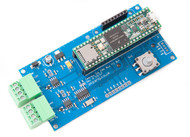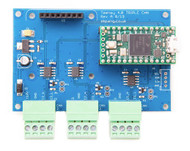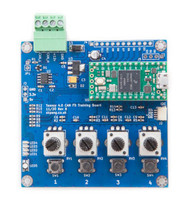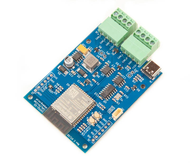- Home
- Literature
- Embedded Networking with CAN and CANopen
Product Description
This product is discontinued!
Nevertheless, the book is available through Amazon.com in the US or any other country.
Paperback: 554 pages
Publisher: Copperhill Media Corporation (April 1, 2008)
Language: English
ISBN-10: 0976511622
ISBN-13: 978-0976511625
Product Dimensions: 9.7 x 1.1 x 7.4 inches
CAN (Controller Area Network) is a serial communication protocol that was originally developed for the automobile industry. CAN is far superior to conventional serial technologies such as RS232 in regards to functionality and reliability and yet CAN implementations are more cost effective. CANopen, a higher layer protocol based on CAN, provides the means to apply the ingenious CAN features to a variety of industrial-strength applications. Many users, for example in the field of medical engineering, opted for CANopen because they have to meet particularly stringent safety requirements. Similar requirements had to be considered by manufacturers of other equipment with very high safety or reliability requirements (e.g. robots, lifts and transportation systems).
Providing a detailed look at both CAN and CANopen, this book, writeen by the founders of the Embedded Systems Academy, examines those technologies in the context of embedded networks. There is an overview of general embedded networking and an introduction to the primary functionality provided by CANopen. Everything one needs to know to configure and operate a CANopen network using off-the-shelf components is described, along with details for those designers who want to build their own CANopen nodes. The wide variety of applications for CAN and CANopen is discussed, and instructions in developing embedded networks based on the protocol are included. In addition, references and examples using MicroCANopen, PCANopen Magic, and Vector's high-end development tools are provided.
About CANopen
CANopen is a communication protocol and device profile specification for embedded systems used in automation. In terms of the OSI model, CANopen implements the layers above and including the network layer. The CANopen standard consists of an addressing scheme, several small communication protocols and an application layer defined by a device profile. The communication protocols have support for network management, device monitoring and communication between nodes, including a simple transport layer for message segmentation/desegmentation. The lower level protocol implementing the data link and physical layers is usually Controller Area Network (CAN), although devices using some other means of communication (such as Ethernet Powerlink, EtherCAT) can also implement the CANopen device profile.
The basic CANopen device and communication profiles are given in the CiA 301 specification released by CAN in Automation. Profiles for more specialized devices are built on top of this basic profile, and are specified in numerous other standards released by CAN in Automation, such as CiA 401 for I/O-modules and CiA 402 for motion control. (Source: Wikipedia.org)
 Loading... Please wait...
Loading... Please wait...









